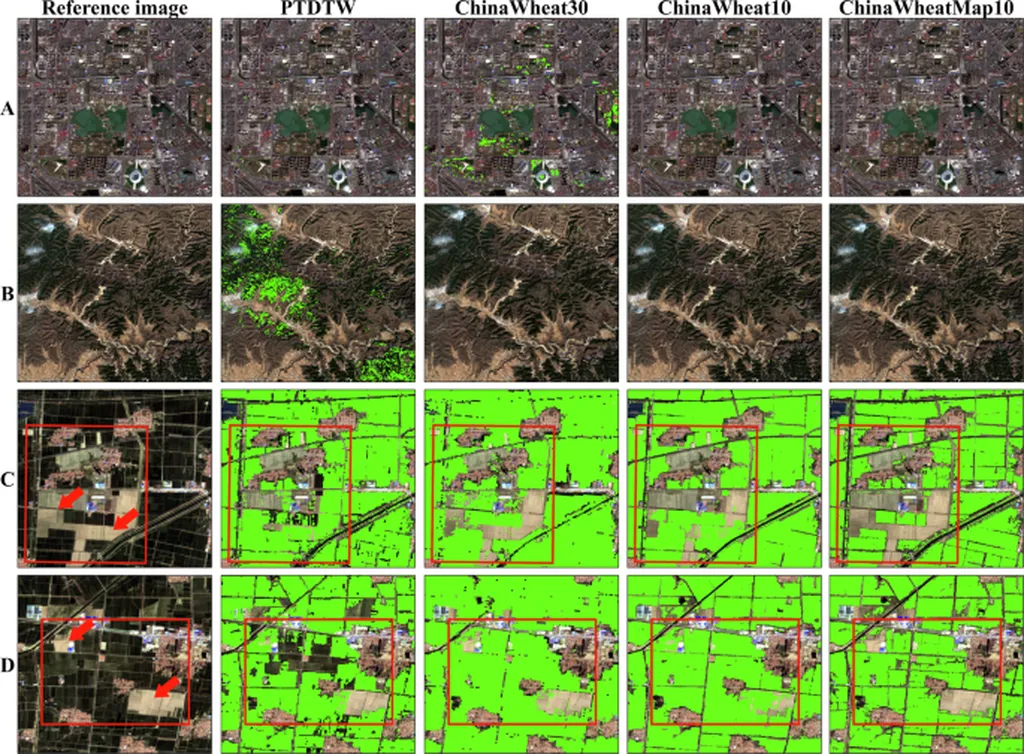In the heart of China’s agricultural landscape, a groundbreaking study led by Dr. Li Xiao-tao and Dr. Yuan Shi-fan from the China Institute of Water Resources and Hydropower Research and Taiyuan University of Technology is revolutionizing how we monitor and manage winter wheat crops. Their research, published in the esteemed journal ‘长江科学院院报’ (translated as ‘Yangtze River Science Academy Journal’), harnesses the power of Sentinel-2 satellite imagery and advanced machine learning techniques to identify winter wheat growth stages with unprecedented accuracy. This innovation could have significant implications for the energy sector, particularly in optimizing irrigation practices and reducing water consumption in agriculture.
The study systematically analyzes the effectiveness of spectral reflectance and vegetation index (VI) curves for identifying different growth stages of winter wheat. By integrating multi-spectral features with ensemble learning, the researchers have developed a method that promises to transform smart agriculture. “The spectral reflectance and vegetation index values across different growth stages of winter wheat show significant differences,” explains Dr. Li. “This provides a crucial basis for distinguishing key growth stages and optimizing irrigation strategies.”
The researchers collected 83 Sentinel-2 Level-2A images covering all nine growth stages of winter wheat, from emergence to maturity. They analyzed the reflectance patterns of 12 original Sentinel-2 bands and 8 vegetation indices, using a feature selection approach combined with the XGBClassifier to identify key feature parameters. The study found that vegetation indices derived from multi-band combinations were more effective in characterizing changes in crop physiological status and reducing background interference.
One of the most significant findings was the unique advantage of red-edge bands in capturing key physiological changes in winter wheat, such as chlorophyll content and leaf structure. “Red-edge bands can effectively improve the accuracy of identification models for winter wheat growth stages,” notes Dr. Yuan. This discovery could lead to more precise and efficient monitoring of crop health and growth, ultimately enhancing agricultural productivity.
The researchers employed a Stacking ensemble architecture to integrate five different types of machine learning models, including support vector machine (SVM), random forest (RF), extremely randomized trees (ERT), backpropagation neural network (BPNN), and k-nearest neighbors (KNN). The ensemble model achieved an overall accuracy exceeding 0.9075, with a Kappa coefficient and F1-Score above 0.8916. This high level of accuracy is a game-changer for the agricultural industry, enabling more precise and timely interventions to optimize crop yields.
The implications of this research extend beyond the agricultural sector. In the energy sector, optimizing irrigation practices can lead to significant water savings, reducing the energy required for water pumping and treatment. This, in turn, can lower greenhouse gas emissions and contribute to more sustainable energy practices. “By improving the efficiency of water use in agriculture, we can reduce the energy footprint of the sector and contribute to a more sustainable future,” says Dr. Li.
The study’s findings also highlight the potential for integrating remote sensing and machine learning techniques in other areas of agriculture and environmental monitoring. As Dr. Yuan explains, “The methods and models developed in this study can be adapted and applied to other crops and regions, providing valuable insights for precision agriculture and environmental management.”
In conclusion, the research led by Dr. Li Xiao-tao and Dr. Yuan Shi-fan represents a significant advancement in the field of smart agriculture. By leveraging the power of remote sensing and machine learning, they have developed a method for identifying winter wheat growth stages with unprecedented accuracy. This innovation has the potential to transform agricultural practices, optimize water use, and contribute to a more sustainable future. As the agricultural industry continues to evolve, the integration of advanced technologies will play a crucial role in addressing the challenges of food security and environmental sustainability.

